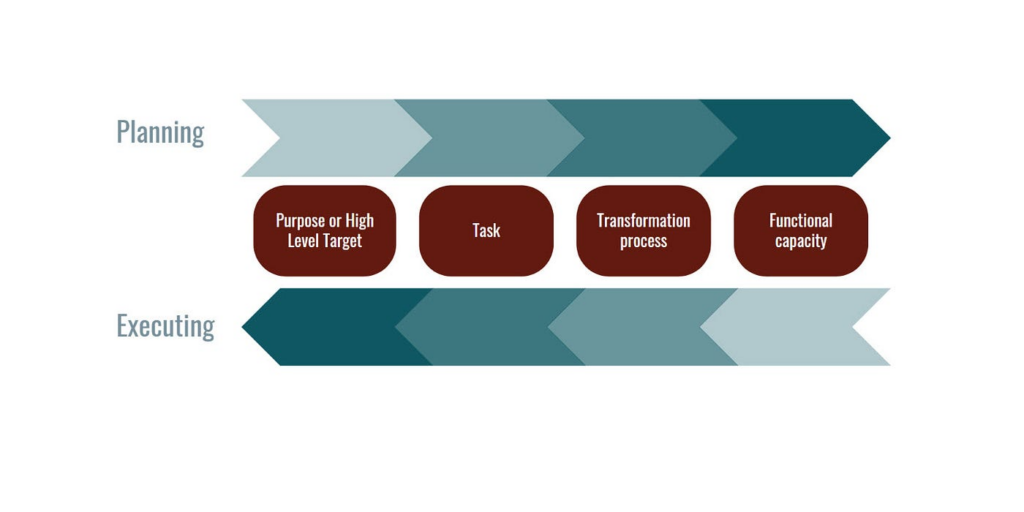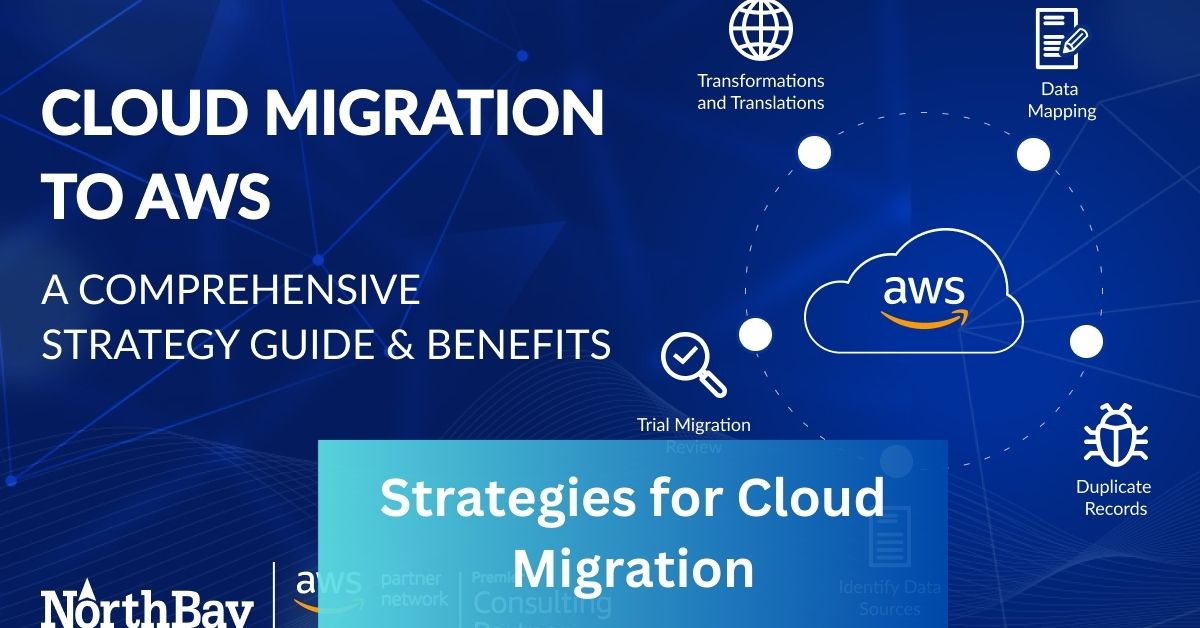Cloud computing has revolutionized the way businesses operate by offering scalable and flexible solutions for storing, managing, and processing data.
As organizations strive to modernize their IT infrastructure and adapt to changing market demands, cloud migration has become a crucial strategy for staying competitive in the digital landscape.
In this article https://freeserverhostingweb.club/2023/01/12/estrategias-para-emigrar-a-la-nube/, we’ll explore the intricacies of cloud migration, including its definition, benefits, challenges, deployment models, strategies, planning and execution, tools and resources, industry-specific considerations, and the future outlook.
What is cloud migration?
Cloud migration refers to the process of transferring digital assets, such as applications, data, and workloads, from on-premises infrastructure to cloud-based environments.

This transition enables organizations to leverage the scalability, reliability, and cost-efficiency of cloud computing services offered by providers like Amazon Web Services (AWS), Microsoft Azure, and Google Cloud Platform.
Benefits of migrating to the cloud:
The decision to migrate to the cloud offers numerous benefits, including:
- Scalability: Cloud environments allow organizations to quickly scale resources up or down based on demand, enabling cost savings and improved performance.
- Cost-efficiency: Cloud services eliminate the need for upfront hardware investments and provide pay-as-you-go pricing models, reducing capital expenditures.
- Agility and flexibility: Cloud platforms enable rapid deployment of new applications and services, facilitating innovation and faster time-to-market.
- Enhanced security: Cloud providers implement robust security measures and compliance standards, reducing the risk of data breaches and ensuring regulatory compliance.
- Disaster recovery and business continuity: Cloud-based backup and recovery solutions offer redundancy and resilience, minimizing downtime and data loss in the event of disruptions.
Challenges of migrating to the cloud
https://freeserverhostingweb.club/2023/01/12/estrategias-para-emigrar-a-la-nube/
Despite its numerous benefits, cloud migration presents several challenges, including:
- Complexity: Migrating complex, interconnected systems to the cloud requires careful planning, coordination, and execution to avoid disruptions and ensure compatibility.
- Data migration: Transferring large volumes of data to the cloud can be time-consuming and bandwidth-intensive, leading to potential downtime and performance issues.
- Security concerns: Protecting sensitive data and ensuring compliance with industry regulations requires robust security measures and encryption protocols.
- Integration and interoperability: Integrating cloud services with existing on-premises systems and applications may pose compatibility issues and require customization.
- Skills gap: Implementing cloud migration projects requires specialized knowledge and skills in areas such as cloud architecture, automation, and DevOps practices.
Cloud Deployment Models:
Cloud computing offers several deployment models, each with its own characteristics and use cases:https://freeserverhostingweb.club/2023/01/12/estrategias-para-emigrar-a-la-nube/
Public cloud: Public cloud services are hosted and managed by third-party providers, offering on-demand access to shared resources, such as virtual machines, storage, and networking, over the internet.
Private cloud: Private cloud environments are dedicated to a single organization, providing enhanced security, control, and customization options compared to public clouds. They can be hosted on-premises or by third-party providers.
Hybrid cloud: Hybrid cloud environments combine public and private cloud infrastructure, allowing organizations to leverage the scalability and cost-efficiency of public clouds while maintaining control over sensitive data and critical workloads in private clouds.
Choosing the right cloud deployment model depends on factors such as security requirements, compliance regulations, performance needs, and budget constraints.
Also Read: From Idea to Impact: Easy Tips for Entrepreneurs in the USA
Cloud Migration Strategies https://freeserverhostingweb.club/2023/01/12/estrategias-para-emigrar-a-la-nube/
There are various strategies for migrating applications and workloads to the cloud, commonly referred to as the “6 Rs of Cloud Migration”:
- Rehost (Lift-and-Shift): This strategy involves migrating applications to the cloud without making significant changes to their architecture or code, minimizing disruption and complexity.
- Replatform: Replatforming entails making slight modifications to applications to optimize them for cloud environments, such as updating dependencies or configurations.
- Repurchase: In some cases, it may be more cost-effective to repurchase existing software solutions as cloud-based services rather than migrating them directly.
- Refactor: Refactoring involves redesigning applications to leverage cloud-native features and services, such as microservices architecture or serverless computing, to maximize performance and scalability.
- Retire: Legacy applications or redundant systems that are no longer critical to business operations can be retired or decommissioned to streamline the migration process and reduce costs.
- Retain: Some applications or workloads may not be suitable for migration to the cloud due to regulatory restrictions, legacy dependencies, or performance requirements, and may need to remain on-premises.
Choosing the right migration strategy depends on factors such as application complexity, compatibility, performance objectives, and cost considerations.
Planning and Execution:
Successful cloud migration requires careful planning and execution, including:https://freeserverhostingweb.club/2023/01/12/estrategias-para-emigrar-a-la-nube/

- Assessing your current environment: Conduct a thorough inventory and analysis of existing applications, data, and infrastructure to identify dependencies, performance bottlenecks, and migration priorities.
- Developing a migration plan: Create a detailed roadmap outlining migration objectives, timelines, resource requirements, and risk mitigation strategies.
- Selecting a cloud provider: Evaluate different cloud providers based on factors such as service offerings, pricing, reliability, security, and compliance capabilities.
- Budgeting and cost estimation: Estimate migration costs, including one-time expenses for infrastructure provisioning, data transfer, and training, as well as ongoing operational expenses for cloud services.
- Security considerations: Implement security best practices, such as data encryption, access controls, and threat detection, to protect sensitive information and ensure regulatory compliance.
- Data migration strategies: Develop a data migration plan to transfer data securely and efficiently to the cloud, considering factors such as data volume, transfer speeds, and downtime tolerance.
Tools and Resources:
Numerous tools and resources are available to assist organizations in planning, executing, and optimizing cloud migration projects, including:
- Cloud migration tools and platforms: Tools such as AWS Migration Hub, Azure Migrate, and Google Cloud Migrate offer automated migration capabilities, assessment tools, and project management features to simplify the migration process.
- Best practices and case studies: Learning from industry best practices and real-world case studies can provide valuable insights and guidance for successful cloud migration initiatives.
- Additional resources for learning and support: Online courses, training programs, documentation, and community forums offered by cloud providers and industry organizations can help build knowledge and expertise in cloud migration.
Also Read: Claiming Your Share: A Guide to Participating in OKX Giveaways
The future of cloud migration https://freeserverhostingweb.club/2023/01/12/estrategias-para-emigrar-a-la-nube/
The future of cloud migration is shaped by emerging trends and technologies, as well as industry-specific considerations, regulatory compliance requirements, and sustainability initiatives:
- Industry-specific considerations for cloud migration: Different industries have unique regulatory compliance requirements, security concerns, and data privacy regulations that must be addressed during cloud migration, such as HIPAA for healthcare organizations or GDPR for businesses operating in the European Union.
- Regulatory compliance and data privacy in the cloud: Cloud providers must adhere to strict regulatory standards and compliance certifications, such as SOC 2, ISO 27001, and GDPR, to ensure the security and privacy of customer data.
- Measuring the success of your cloud migration: Key performance indicators (KPIs) such as cost savings, performance improvements, uptime, and user satisfaction can be used to measure the success of cloud migration initiatives and inform future optimization efforts.
- Sustainable cloud practices: As organizations increasingly prioritize sustainability and environmental responsibility, adopting eco-friendly practices such as energy-efficient data centers, renewable energy sources, and carbon offsetting becomes essential for ethical and competitive reasons.
Conclusion:
https://freeserverhostingweb.club/2023/01/12/estrategias-para-emigrar-a-la-nube/ Cloud migration is a complex and multifaceted process that requires careful planning, execution, and ongoing optimization to maximize its benefits and minimize risks.
By understanding the various deployment models, migration strategies, planning considerations, and tools available, organizations can successfully navigate the cloud migration journey and unlock new opportunities for innovation, agility, and growth in the digital age.
FAQ’s:
1. What is the difference between public, private, and hybrid clouds?
Public clouds are hosted by third-party providers, private clouds are dedicated to a single organization, and hybrid clouds combine elements of both.
2. What are the main benefits of cloud migration?
Cloud migration offers scalability, cost-efficiency, agility, enhanced security, disaster recovery, and business continuity.
3. What are the challenges of migrating to the cloud?
Challenges include complexity, data migration, security concerns, integration issues, and addressing the skills gap.
4. What are the “6 Rs” of cloud migration?
The “6 Rs” include Rehost (Lift-and-Shift), Replatform, Repurchase, Refactor, Retire, and Retain.
5. How do I choose the right cloud migration strategy?
Consider factors such as application complexity, compatibility, performance objectives, and cost considerations.
6. What tools can assist with cloud migration?
Cloud migration tools and platforms like AWS Migration Hub, Azure Migrate, and Google Cloud Migrate offer automated capabilities and assessment tools.
7. How can I measure the success of my cloud migration?
Key performance indicators (KPIs) such as cost savings, performance improvements, uptime, and user satisfaction can gauge the success of cloud migration initiatives.
